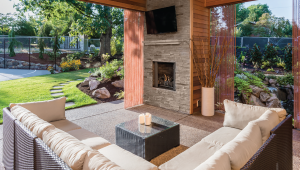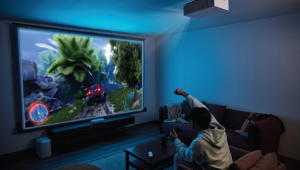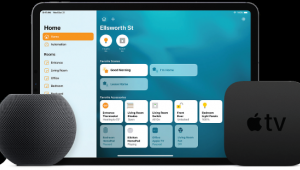Home Theater Planning: Walk Back the Design, Part 1

I can remember my technologically skeptical dad saying, “Why would anybody want that?” Fortunately, enough people wanted it that 20 years later my company, Custom Theater and Audio, is still in business.
Today, I rarely ever have to explain what our company does since most folks generally understand what a home theater or media room is. I still regularly meet with clients, however, who have little or no idea where to start the design process when considering an installation for their home. In these cases, I find it best to work the design process back from how they would like the room to actually look and perform once the project is completed.
Two of the biggest home theater design variables are the speakers and display. This blog will focus on display selection.
The room and/or budget often dictates the best type of display for the space, and there are certain bits of information I want to know before leading a client to one technology over another.
1. How big is the wall where the projection screen or TV will be installed, and how far back from it will viewers sit?
The primary reason for choosing a projector is to get a large, cinematic image, but if the display wall isn’t large enough, is broken up by doors or windows, or has an unusual construction — like an A-frame design — it might not comfortably support a large screen. Also, if the room can’t accommodate seating distances at least 8-10 feet away from the screen, a smaller, flat-panel set is likely the better choice. (For reference, a 75-inch screen exceeds the Society of Motion Picture and Television Engineers, or SMPTE, recommended viewing angle at 10 feet.)
2. Does the budget support a two-piece projector and screen installation?
Prices for large flat-panel sets continue to drop while their performance simultaneously improves. Black Friday 2018 saw name-brand 85-inch Ultra HDTVs selling for less than $3,000, and 75-inch models for well under $2,000. While there are similarly priced projectors, their performance — especially when it comes to factors like brightness and contrast while displaying high dynamic range (HDR) content — can’t touch flat-panel TVs.
Also, a projector needs to be paired with a screen for optimal image quality, which can add hundreds or thousands of dollars to the install depending on the size, design, and model. Wiring and installation costs, too, are always higher with a projection system.
3. Can the room be closed off and made dark during the day?
Recent improvements in projector technology have made installations possible in a greater range of environments. New projectors are brighter and capable of delivering better contrast, especially when paired with an ambient light rejecting screen like the Black Diamond from Screen Innovations, Phantom HALR from Stewart Filmscreen, or Aeon CLR from Elite Screens.
Even so, projectors produce their best-looking images in a darkened room. That’s because they can’t project black; instead they project nothing — or as close to nothing as they can manage — where black should be, so the black level you see onscreen will only be as dark as the room. The room doesn’t need to be pitch black, but if it is an open space, or there are lots of windows, projection will be more difficult — and expensive — to pull off successfully.
4. How do you want the system to look when it is off?
No matter how terrific your system is, it’s likely to be turned off far more than on and in use.
How do you want the room to look when it’s off? A giant screen on the wall will inevitably dominate a room. This is less of an issue in a dedicated, closed-off room where “stepping into a movie theater” is the desired effect, but most people don’t want that for their living room or family room. While there are lifts available that raise and hide flat-panel sets, these can be costly and tricky to implement.
In this case, a projection system can be the perfect solution, with a screen concealed in the ceiling or behind a valance, and an ultrashort throw projector (like Sony’s VPL-VZ1000ES or Epson’s LS100) that can be concealed inside a piece of furniture. With such a setup, you can have a fully hidden 100-inch-plus display that only reveals itself when it’s time to watch!
Next time, I’ll walk things back from an audio standpoint.
- Log in or register to post comments






























































